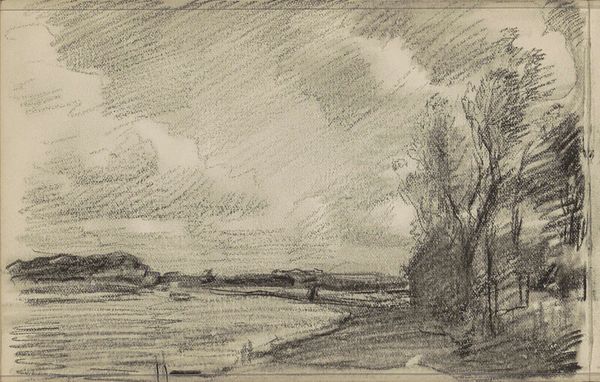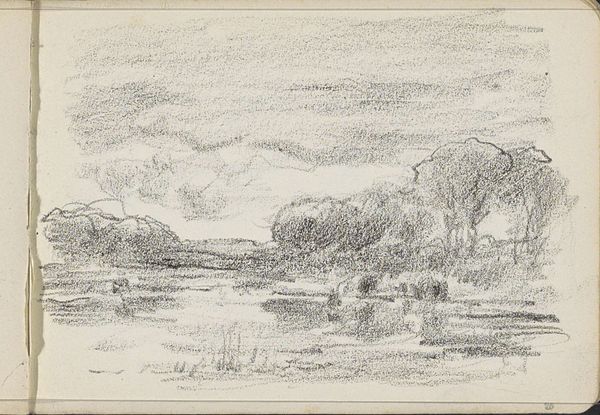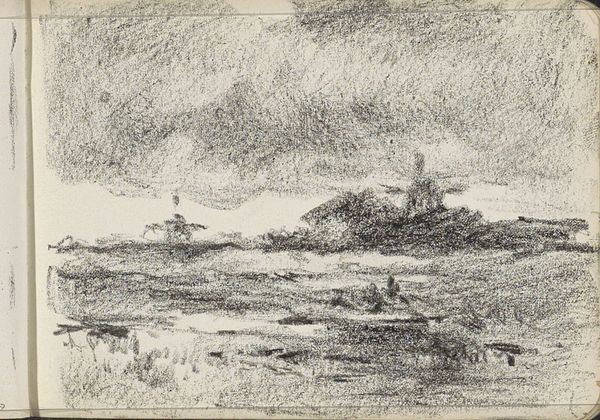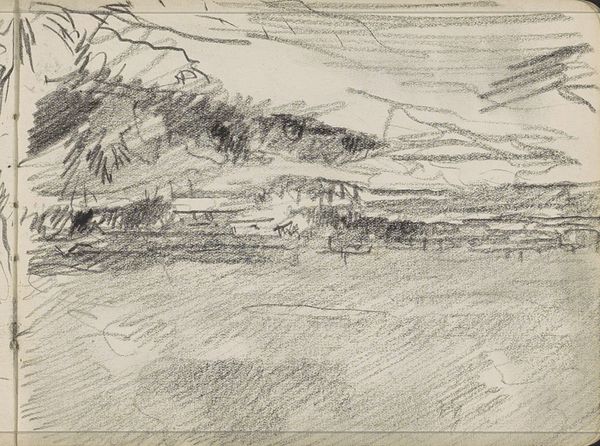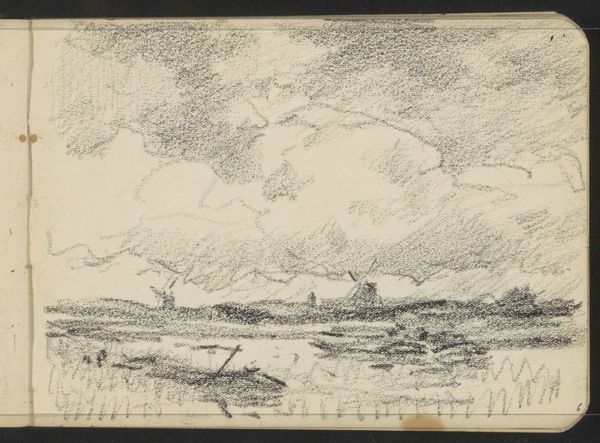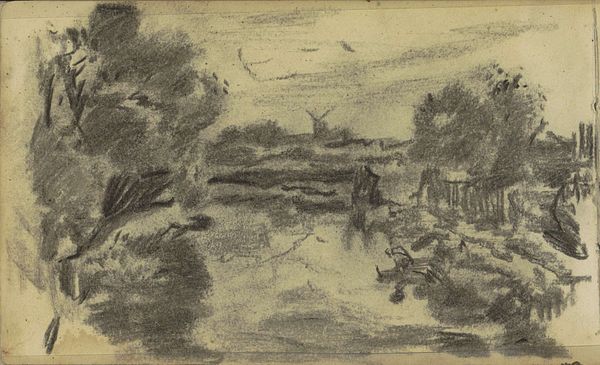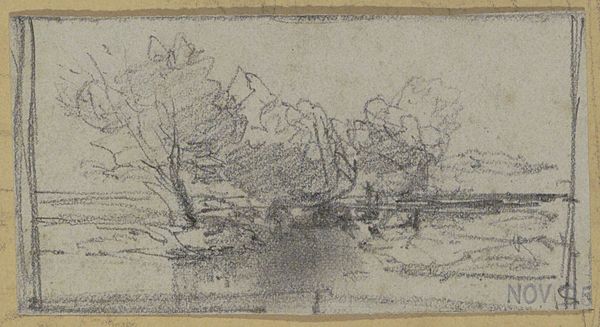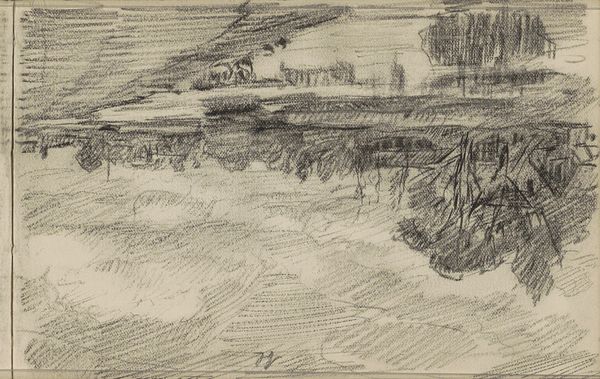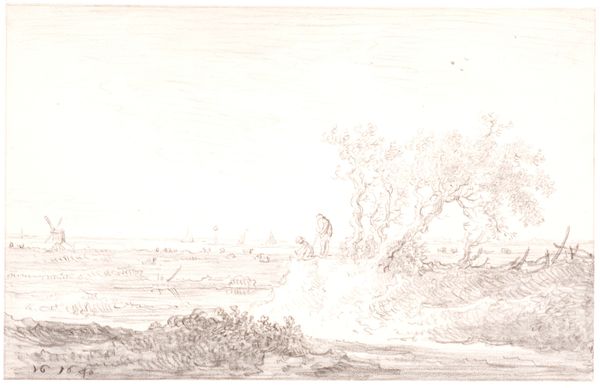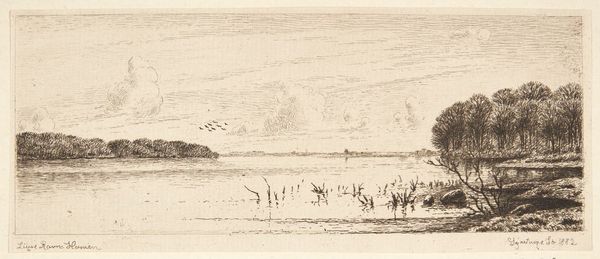
Dimensions: height 114 mm, width 159 mm
Copyright: Rijks Museum: Open Domain
Editor: Here we have Willem Cornelis Rip’s “Landscape with Water and a Mill,” a pencil drawing from 1907. It’s a very simple sketch, quite evocative, and somewhat moody given the heavy sky. What stands out to you about this particular drawing? Curator: The sketch's materiality speaks volumes. It’s pencil on paper, immediate and accessible. Consider the social context: early 20th century, industrialization booming, yet here’s Rip capturing a rural scene with such rudimentary means. This isn’t high art, it's everyday making, blurring lines between craft and fine art, no? Editor: Definitely! The rawness is compelling. How does its simplicity inform our understanding? Curator: Think about the labor involved, even in something that appears so effortless. Each stroke, each shadow, a physical action, evidence of the artist’s hand, the graphite grinding against the page. The choice of such inexpensive materials implies something about Rip’s access, the potential democratization of art making. He's showing the land, but he’s also showing the *means* of depicting the land. The means reflect how commoners were consumers and laborers, their lives dictated by economic realities as well as physical landscapes. Editor: So it’s not just *what* he’s depicting, but *how* he's depicting it. Curator: Precisely. And the “how” is tied directly to available resources, societal norms of production, the culture of the sketch itself and what Rip felt was relevant to put down quickly in front of his eyes at that moment. He may not have expected it to enter this rarefied setting of a museum collection. What do we lose, and what do we gain by isolating an ephemeral material experience like this from its messy origin? Editor: I hadn’t considered it in those terms. Now I see this humble drawing in a completely new light. Curator: It is remarkable how just paying attention to the materials can teach us so much about the conditions of art production, even with the smallest and quickest drawing.
Comments
No comments
Be the first to comment and join the conversation on the ultimate creative platform.
